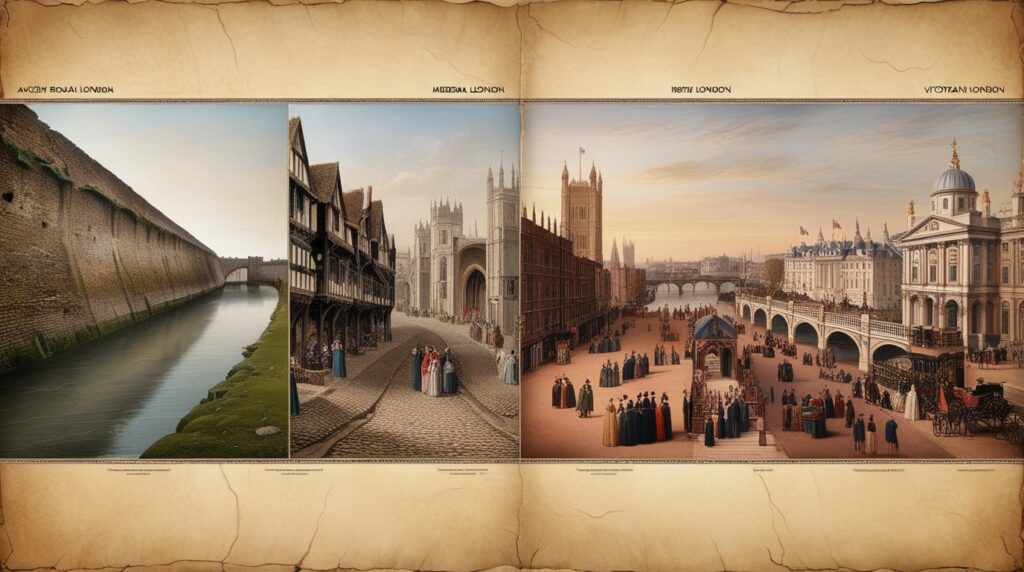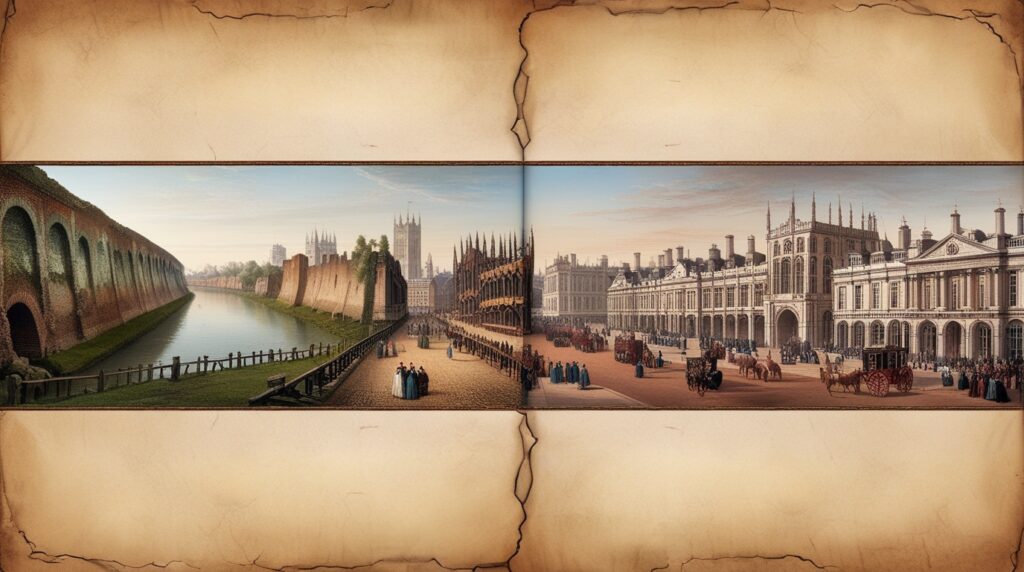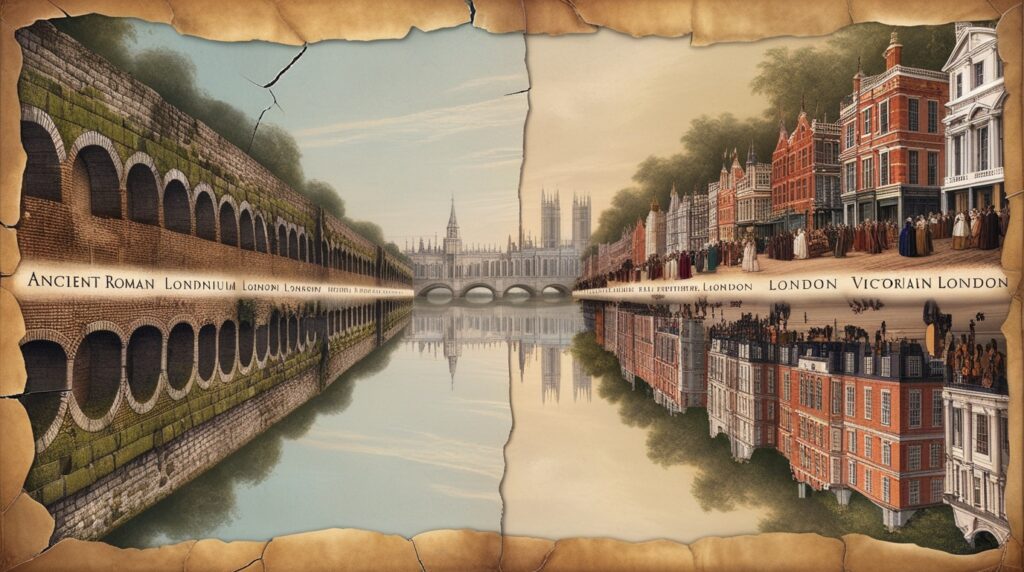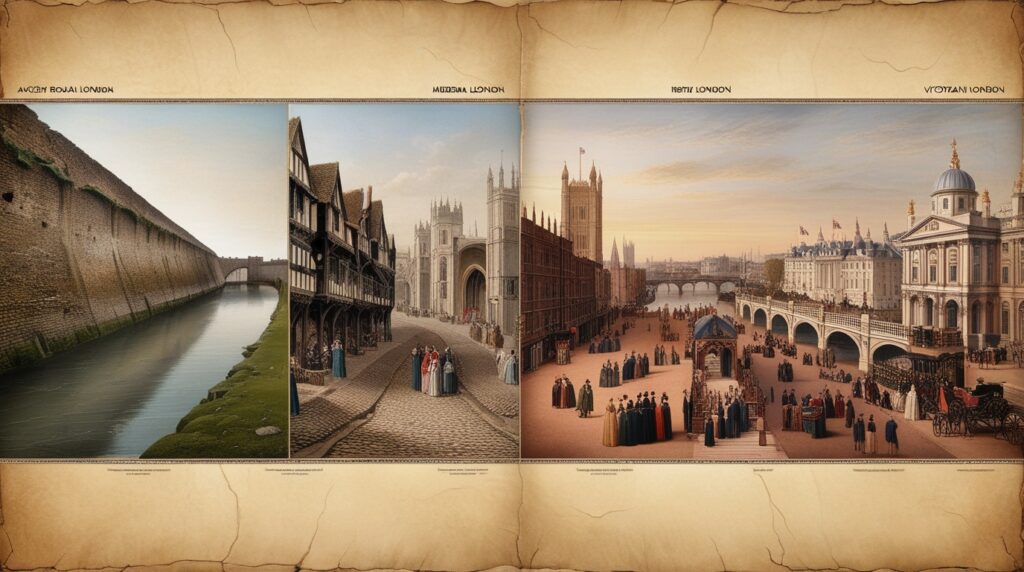
London, the capital of England, stands as one of the world’s most dynamic cities, brimming with history, culture, and innovation. Its journey through time is a captivating tale of resilience and transformation, from its humble beginnings as a Roman settlement to becoming a global metropolis.
Roman Foundations
London’s story begins in 43 AD when the Romans established Londinium on the banks of the River Thames. This strategic location was ideal for trade and defense, leading to rapid growth. The Roman influence can still be felt today, with remnants like the London Wall and the Mithraeum temple providing a glimpse into this ancient past.
Medieval London: Growth and Challenges
Following the fall of the Roman Empire, London faced invasions by Saxons, Vikings, and Normans. By the Middle Ages, it had evolved into a bustling city and the heart of England’s trade network. The construction of landmarks like Westminster Abbey (founded in 960 AD) highlighted its growing significance. However, the city also endured hardships, such as the devastating Black Death in 1348 and the Great Fire of London in 1666, which reshaped its urban landscape.

The Renaissance and the Elizabethan Era
The 16th century ushered in an era of cultural and economic flourishing. Under Queen Elizabeth I, London became the epicenter of the English Renaissance. It was during this time that William Shakespeare’s plays were performed at the Globe Theatre, captivating audiences with tales of human nature and ambition.
The Industrial Revolution and Victorian Splendor
The 18th and 19th centuries saw London transformed by the Industrial Revolution. The city expanded rapidly, becoming a hub for manufacturing and trade. Innovations like the London Underground (opened in 1863) revolutionized urban transport, while Victorian architecture left an indelible mark with landmarks like the Houses of Parliament and Tower Bridge.
The World Wars and Modern Rebirth
The 20th century brought both challenges and opportunities. London endured significant bombings during the Blitz in World War II, but its resilience shone through as it rebuilt and modernized. The post-war period saw the city embrace diversity, becoming a melting pot of cultures.

A Global Capital
Today, London is a global powerhouse, known for its financial centers, cultural landmarks like the British Museum and Tate Modern, and iconic sites like Buckingham Palace and the Shard. It seamlessly blends history with innovation, making it a city like no other.







